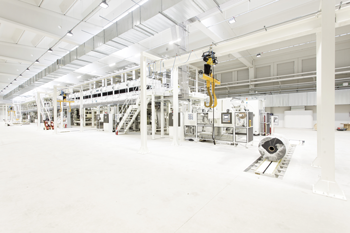The Italian Government’s plan for Industry 4.0
The results one year after the launch of the project coordinated by the Ministry of Economic Development – MiSE – which show the guidelines and tools to achieve within four years the objective of an innovative, sustainable and interconnected industry
by Enrico Di Amario
The industry of the future will have to be innovative, sustainable and interconnected, capable of integrating the results of the scientific progresses within new products and services, of turning the environmental limitations into opportunities and of enhancing the development potential linked to ICT – Information & Communications Technology. The factory, following the fourth industrial revolution, will have to be a flexible organization, with no waste, just-in-time productions supplying the desired quantities with short delivery times, founded on a continuous cooperative learning process where human resources will suggest “bottom-up” changes which, if truly effective, will be adopted in a short time. The objective is being able to provide smart industrial productivity, the turning point for a digital transformation based on integration between different work phases: the creation of an interconnected company – not just a factory – capable of using the IoT – Internet of Things – tools and of exploiting the potential of “analytics” combining the strength of automation with the power of individuals’ imagination and creativity.
The Italian national Industry 4.0 Plan
Starting from these assumptions, over a year ago the Italian Government launched the Italy’s National Plan Impresa 4.0 which defines guidelines and deploys adequate tools to reach an objective. The Plan has a time span of four years (2017-2020) and an innovative approach, with horizontal actions focusing on technologies and stimulating the innovation of companies based upon four pillars:
• investments, whose purpose is stimulating the innovative potential of companies and the adoption of 4.0 technologies: super amortization, hyper amortization, R&D tax credit, new Sabatini law etc.;
• enabling infrastructures, with the completion of the Ultra Broad band Plan and the presence on international tables regarding standards of IoT interoperability;
• competence and research, with the implementation of the National Digital School Plan, the reinforcement of the alternating school-work scheme, the broadening of the offer of Technical Institutes, the activation of University courses, master’s and doctor’s degrees, all of which focusing on 4.0 themes, to say nothing of the creation of the Digital Innovation Hub network and Competence Centres called upon to function as conveyors between the research world and the industry;
• awareness and governance, with a strong awareness-raising and spreading of the “4.0 culture” and the creation of a control panel monitoring the implementation of the Plan, coordinated by MiSE, by the Ministry for University and Research (MiUR) and by the Presidency of the Council of Ministers and with the partnership of ministries, universities, the state-owned deposit and loan fund Cassa Depositi e Prestiti, the National Research Centre CNR, the entrepreneurial association Confindustria, the company network Rete Imprese Italia and trade unions.
The results after one year
Over one year after the introduction of the Enterprise 4.0 Plan, the Economic Development Minister, Carlo Calenda, decided to share with entrepreneurs the balance of this initiative and to present the new measures launched for 2018. In his message he highlighted that in 2017 companies which invested in research and development more than doubled (+104%) with respect to 2016 and that the growth of domestic orders for 4.0 goods, supported by super and hyper amortization and by the New Sabatini law, showed an 11% increase. While presenting other data defined as absolutely encouraging, he mentioned that the Guarantee Fund for SMEs guaranteed 17.5 billion euro additional credit, that the Development Contracts activated 4 billion euro investments creating or safeguarding 58,000 lobs and that Italian exports, which grew by 8%, obtained a better performance than France or Germany.
Consolidation measures for 2018
In order to consolidate this process – Carlo Calenda concluded – the Enterprise 4.0 Plan for 2018 includes several measures; among them, it is worth remembering:
• re-financing for an amount of 7.8 billion euro and the renewal of the terms for hyper amortisation with a 250% rate up to December 31st, 2019 (following order placement and downpayment by December, 2018) and of the terms of super amortisation with a 130% rate up to June 30th, 2019 (following order and downpayment by December 31st, 2018);
• the New Sabatini law for 330 million euro;
• 823 million euro budgeted for 2018 as Guarantee Fund which will allow SMEs to acess about 20 billion euro of additional credit;
• the institution of the Fund for immaterial capital with an endowment of 225 million euros to finance research and innovation projects;
• action taken for human resources and competence; tax credit of 40% for those companies who invest in training their workers regarding 4.0 technologies with an estimate of 250 million euro worth of incentives, 95 million to double in three years the present number of students in secondary technical institutes.
The Enterprise 4.0 2018 plan adds up, in total, to 9.8 billion euro worth of resources, not to mention multiannual resources, such as, Tax Credit for Research and Development which is valid right up to 2020, and the structural support for start-ups.

